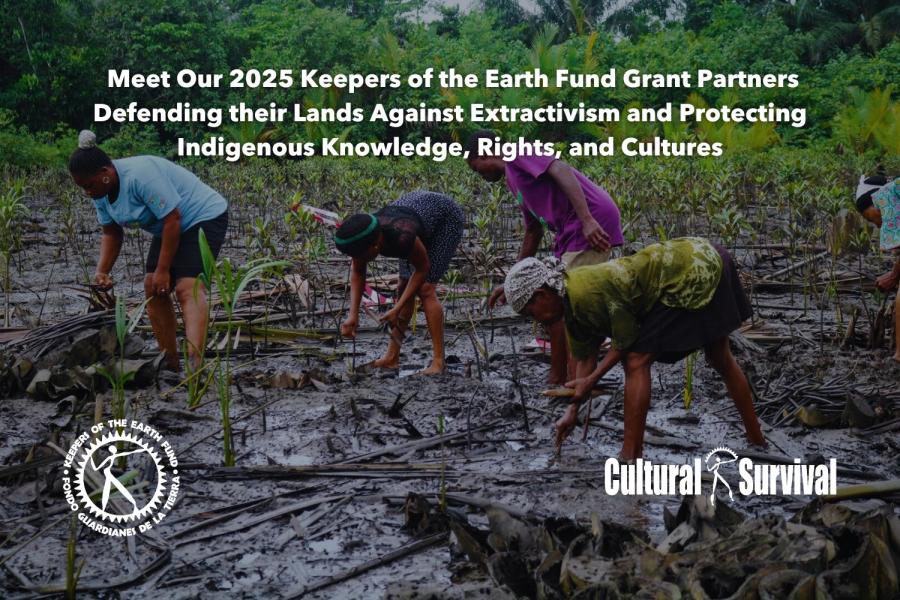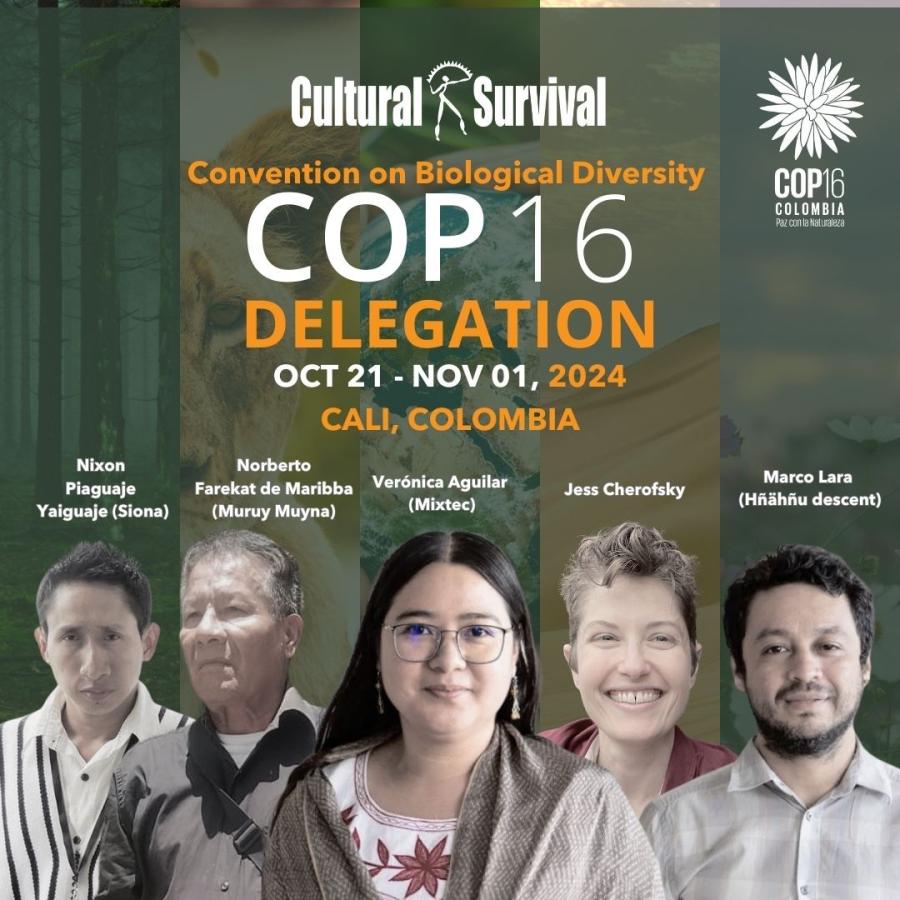The Source of Our Cures: A new pharmaceutical company wants to provide. reciprocal benefits and recognize the value of indigenous knowledge
FOR 500 YEARS, SINCE THE People of South America encountered Europeans on their soil, the global pharmacopoeia has been enriched by a number of important plant-derived medicines discovered and utilized by indigenous people.
The skeletal muscle relaxant d-tubocurarine is derived from an Amazonian arrow poison better known as curare, Chonodendron tomentosum. The antimalarial drug quinine, obtained from the bark of the several species on Cinchona trees, was first called "Indian fever bark" by the Europeans until the name "Jesuit fever bark" became more popular. Quinidine, also produced from the bark of Cinchona species, is now used as an antiarrhythmic for people with cardiac problems. An important amoebocide and emetic drug emetine, obtained from the roots of Cephalis ipecacuana, was utilized by indigenous people in Brazil to treat dysentery. One of the world's most important local anesthetics, cocaine is derived from the leaves of Erthroxylum coca and is still used today as medicine by thousands of people in the Andean region of South America. Pilocarpine, a drug used to treat glaucoma, is derived from the plant Pilocarpups jaborandi and was utilized by indigenous people in Brazil as medicine.
These are only a few examples of the mainstream drugs that have been developed based on the - acknowledged - traditional wisdom of indigenous people. Roughly 74 percent of the 121 plant-derived compounds currently used in the global pharmacopoeia have been discovered through research based on ethnobotanical information on the use of plants by indigenous people.
It is well known that tropical forest ecosystems contain a tremendous diversity of plant species. Estimates cite a minimum of 250,000 flowering plant species worldwide, at least 90,000 of which are found in the neotropics. Fewer than one percent of these plants have been investigated even superficially for potential pharmacological activity. A surprisingly large proportion of this plant biodiversity is classified, utilized, and actively managed by indigenous and local people of tropical regions.
Tropical forest people have a profound knowledge about the utility, of plants found in their environment - an observation confirmed by ethnobotanical and ethnopharmacological research in the past decade (see references). At the same time interdisciplinary research by anthropologists, ecologists, geographers, and tropical agrnomists has shown that indigenous people and rural inhabitants of the neotropics have been - and continue to - actively managing plant genetic resources in their environment (Balee and Posey 1989; Irvine 1987; Denevan and Padoch 1988; Posey 1985); plants used as medicine are often moved and maintained as cultivated or wild/cultivated medical resources.
SHAMAN PHARMACEUTICALS
Funded by venture capital, Shaman Pharmaceuticals, Inc. is a traditional pharmaceutical company that focuses on creating ethical pharmaceutical products. Shaman's goal is to discover and develop novel pharmaceuticals from higher plants. Ethnobotanical information about the unique structural chemistry of tropical forest plants will help us discover new prototype compounds that act in the body in previously undiscovered receptors and body pathways. Such drugs could provide modes of treatment unknown in medicine today. We are combining the disciplines of ethnobotany, isolation chemistry, and pharmacology to create a more efficient drug discovery than mass screening and genetic engineering efforts.
Many of the US-approved pharmaceuticals developed over the past 100 years have been derived from natural sources, such as higher plants, and a large number of therapeutic drugs have been developed through indigenous medical knowledge. In spite of this the US pharmaceutical industry dropped its higher plant research efforts back in the 1960s in favor of success with the fermentation of micro-organisms and synthetics. Thus ensued the biotechnology revolution of the past two decades.
Enormous costs and limited success in biotechnology have caused pharmaceutical firms to realize that biotechnology is not their panacea. Many firms are cycling back toward an interest in products from natural sources. The increasingly rapid pace of tropical forest destruction has also heightened worldwide awareness of the fragility of the earth's resource-rich ecosystems.
One of the goals of Shaman Pharmaceuticals is to work with people in tropical forests to discover new medicines and also devise effective strategies for producing raw materials that sustain forest people and their ecosystems. Drug discovery and subsequent commercialization in the 1990s need a new set of reciprocal obligations and a more global and ecologically sensitive orientation. In general, indigenous people and their environment have not been the recipients of reciprocal benefits industries; in a number of specific cases, the situation has been far worse than non-reciprocal. Shaman Pharmaceuticals has created structures to address the ethical, financial, and conservation issues associated with indigenous knowledge and tropical plant genetic resources. Our nonprofit conservation organization, The Healing Forest Conservancy, is founded on our firm belief that important new medicines can be discovered from plant materials. Its structure will enable indigenous people to participate in and share responsibility for sustainable development and/or management of natural resources. It is also dedicated to maintaining global plant biodiversity - especially those plants that have been used traditionally for medical purposes.
A portion of Shaman's profits generated by the commercialization of plant-derived compounds will be distributed to appropriate organizations in countries that participate in the process of plant collection and other collaborative activities. We will develop conservation programs with local tropical forest conservation organizations to manage biological resources more effectively, work with indigenous support organizations to facilitate the sustainable production and marketing of Rainforest products, promote the sharing of knowledge among indigenous people, and produce multilingual publications for use in indigenous communities. We will also collaborate with other conservation organizations to provide accurate scientific information on endangered natural habitats, species, or populations of plants that are or may be important local sources of medicine.
Shaman is committed to providing direct and immediate reciprocal benefits to indigenous people and the countries in which they live. One of the most fundamental human rights and needs is health care; on a recent scientific expedition to an indigenous community in the Ecuadorian Amazon, we provided health care to 60 people, 30 of them children with whooping cough. The people of these two communities - the Waorani and Shuar - want better access to health care facilities, especially in cases of snakebite and unfamiliar diseases and health problems. They also want access to forms of work that would provide them with local currency; they pointed out that hospitals, merchants, and other services and products all required payment in cash.
SUSTAINABLE HARVESTING
Another of Shaman's goals is to develop sustainable harvesting methods for plant products - one of the challenges for pharmaceutical discovery in the 1990s. In many cases nondestructive extractive methods must be developed for species that have previously been destroyed as part of "routine" method for a limited commercial market. Sustainable harvesting methodology is critical for the local economy; it conserves the integrity of the ecosystem and the genetic diversity of the species being commercialized. Managing genetic diversity of any given species in situ (i.e., the areas where they naturally occur) can be partially stimulated through well-managed systems of sustainable harvesting that pay premium prices for material collected through coordinated community extractive programs.
Encouraging people to manage plant genetic resources in situ is one of the benefits that a systematically developed extractive industry can foster. It local and indigenous people receive more direct benefits to manage their natural resources wisely, they will have more incentive to do so in the future. This is not an easy task; it will require innovative approaches and new experiments with harvesting and purchasing techniques and schedules. This type of strategy is significant in that it acknowledges that the conservation of indigenous knowledge and medicinal plant genetic resources are very closely connected.
The challenges facing the drug discovery process in the next decade are closely linked to the goal of documenting, conserving, and placing value on both indigenous knowledge and tropical plant genetic resources. We have an obligation to provide reciprocal benefits for indigenous people; they have the knowledge that will help bring new medicine to our global pharmacopoeia. It is time to recognize the gift that they have provided to the world.
REFERENCES
Alcorn, B.
1984 Huastec Mayan Ethnobotany. Austin: University of Texas Press.
Anderson, A.B.
1988 Use and Management of Native Forests Dominated by Acai Palm (Euterpe oleracea Mart) in the Amazon Estuary. In M.J. Balic, ed. The Palm-Tree of Life: Biology, Utilization and Conservation. Advances in Economic Botany, Vol. 6. pp. 144-155. Brooklyn, NY: New York Botanical Garden.
Balee, W. and D.A. Posey, eds.
1989 Resource Management in Amazonia: Indigenous and Folk Strategies. Advances in Economic Botany, Vol. 7. Brooklyn, NY: New York Botanical Garden.
Balick, M.J.
1988 The Use of Palms by the Apinaye and Guajajara Indians of Northeastern Brazil. In M.J. Balick, ed. The Palm-Tree of Life: Biology, Utilization and Conservation. Advances in Economic Botany, Vol. 6. pp. 65-91. Brooklyn, NY: New York Botanical Garden.
Boom, B.M.
1987 Ethnobotany of the Chacobo Indians, Beni, Bolivia. Advances in Economic Botany, Vol. 4. Brooklyn, NY: New York Botanical Garden.
Davis, E.W. and J.A. Yost
1983 The Ethnomedicine of the Waorani of Amazonian Ecuador. Journal of Ethnopharmacology 9:273-297.
Denevan, W.M. and C. Padoch
1987 Swidden Fallow Agroforestry in the Peruvian Amazon. Advances in Economic Botany, Vol. 5. Brooklyn, NY: New York Botanical Garden.
Elisabetsky, E.
1986 New Directions in Ethnopharmacology. Journal of Ethnobiology 6(1):121-128.
Grenand, P., C. Moretti, and H. Jacquemin
1987 Pharmacopees traditionnelles en Guyane, Creoles, Palikur, Wayapi. Collection Memoires No. 108. Paris: Editions de l'Ortstrom.
Irvine, D.
1987 Resource management by the Runa Indians of the Ecuadorian Amazon. Ph.D. diss. Stanford University.
Iwu, M.M.
1986 Empirical Investigation of Plants Used in Igbo Ethnomedicine. In N. Etkin, ed. Plants in Indigenous Medicine and Diet. New York: Redgrave.
Johns, T.
1990 With Bitter Herbs They Shall Eat It: Chemical Ecology and the Origins of Human Diet and Medicine. Tucson: University of Arizona Press.
King, S.R.
1982 Estudio preliminar de la etnofarmacologia traditional y salud general de los Angotere-Secoya. Amazonia Peruana 3(6):39-49.
Posey, D.A.
1985 Indigenous Management of Tropical Forest Ecosystems: The Case of the Kayapó Indians of the Brazilian Amazon, Agroforestry Systems 3:139-158.
Schultes, R.E. and R.F. Raffauf
1990 The Healing Forest: Medicinal and Toxic Plants of the Northwest Amazonia, Portland, OR: Dioscorides Press.
Tempesta, M. et al.
1990 Antimicrobial Activity and Terpenoids of the Essential Oil of Hyptis suaveolens. International Journal of Crude Drug Research 28:73-76.
Article copyright Cultural Survival, Inc.



